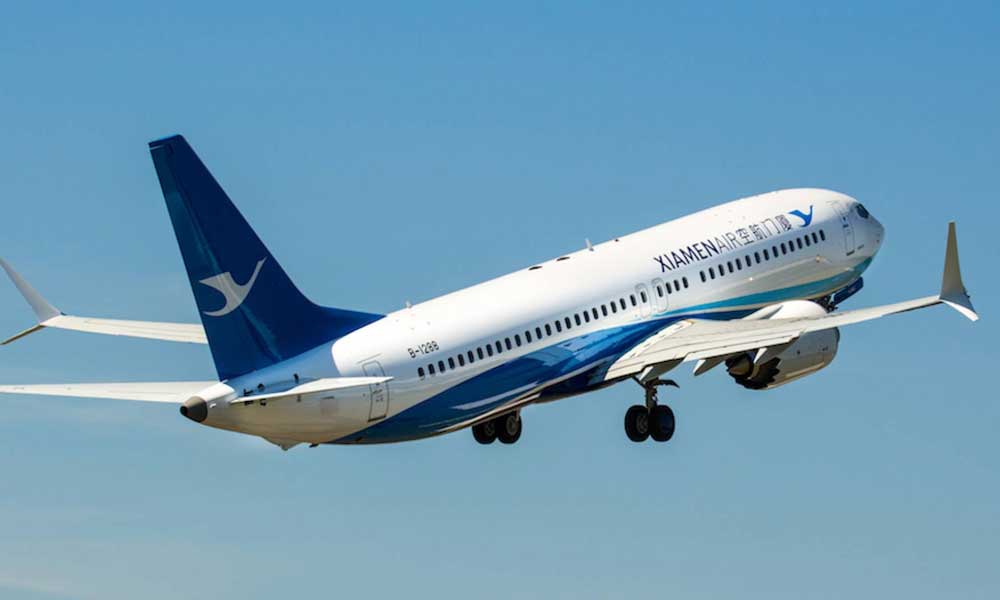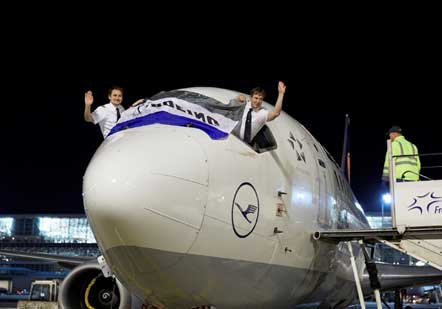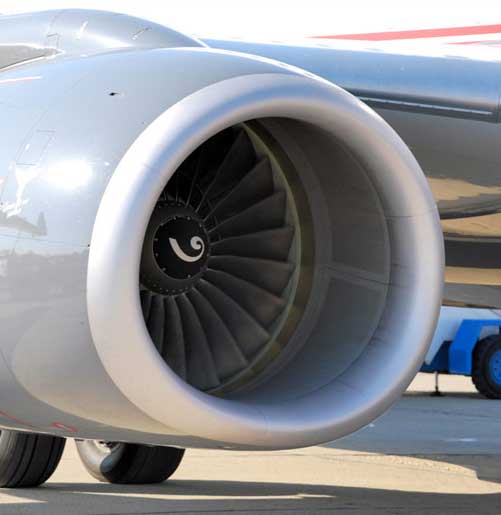
The first flight of Boeing's iconic 737 took place over 50 years ago and they are still being built, delivered, and flown today.
The Boeing 737 continues to make a massive contribution to today's commercial aviation. The company had already successfully delivered two multi-engine jets in the 707 and 727, however, the latest plane looked like a miniature version of its 707 predecessors and was nicknamed "The Baby Boeing". If you've flown a short-haul flight then chances are you did it in a Boeing 737. It is a beautiful looking aircraft with stunning lines and curves in the right planes. The aircraft is a twin-jet turbine engine airliner developed and manufactured by Boeing. Boeing conceived the concept of the 737 in 1964 with the initial test flight taking place in April 1967, before entering airline service the following year. On February 10, 1965, Lufthansa announced it would be the "Launch Customer" for Boeing's 737. The initial order for 21 aircraft would be the first time that a Non-US based carrier would be a launch customer for a new model from Boeing.

Lufthansa would ultimately operate 155 737s. The initial order was 65 million US dollars which adjusted for 2019 it would be valued at approximately 585 million USD. Lufthansa would ultimately operate 155 737s over the years. This was the first time that a jet was being designed specifically for short-haul markets. Previously, jets were primarily used for transcontinental travel, but with the emergence of air travel's popularity, it had become necessary to provide jet service on shorter distances. In Boeing's development of the 737, Lufthansa played a vital role in the engineering of the aircraft. Lufthansa has phased the last l 737 on the 27th of October 2016 as more efficient aircraft are delivered to the fleet. Only thirty Boeing 737-100s were delivered to airlines. The first 737-100 was delivered to Lufthansa on December 28, 1967 - and the very first 737-200 was delivered to United the following day. Amazingly, of the seventeen original 737 customers, only Lufthansa and United are still in business. Such is the volatility of commercial aviation. Boeing's original concept called for seating of only 50-60 passengers, however, Lufthansa required 100 seats which require this became stretch the aircraft to seat 100. United airlines intended to place an order for forty 737s, however, they too required 100 seats and Boeing needs to again stretch the plane. Boeing set about lengthening the aircraft three feet and this became the 737-200. 737-200 entered service in April 1968 whilst the even longer 737-300, -400, and -500 didn't see service until the 1980s. Boeing referred to the later variants like the 737 Classic series which featured CFM56 turbofan engines and wing improvements. The 737 entered the market with existing competition in the BAC 111 and the Douglas DC-9. Industry insiders questioned its viability, however, I think given we're 50 years on the 737 has proven to be quite the survivor. The 737 eventually evolved into a family of thirteen passenger models with capacities from 85 to 215 passengers. Boeing designed the 737 with rows of six seats whereas the DC-9's offered rows of five. In addition, the engine location allowed for much easier maintenance and improved balanced center of gravity.
Development 737 Classic
In 1979, development began for a major revision of the 737s. Boeing wanted to increase capacity and range whilst also incorporating improvements to upgrade the aircraft to modern specifications, while also retaining commonality with previous 737 variants. In 1980 Boeing released the 737-300, was released at the Farnborough Airshow.

Boeing engineers set about designing and fitting a new engine and nacelle that would make the 737-300 into a viable aircraft. After assessing many options they choose the CFM56-3B-1 high bypass turbofan engine to power the aircraft. The new choice yielded significant gains in fuel economy and a reduction in noise, however, given the low ground clearance of 737 it posed an engineering challenge, however, this was solved by moving engine accessories to the sides of the engine pod, giving the engine a distinctive non-circular look. The fuselage was extended which allowed for passenger capacity to increase to 149, In addition, changes to the horizontal stabilizer, wingtip, wingspan, leading, and trailing edges improved aerodynamics.
Peak Oil
In 2008, airlines struggled with the rising price of jet fuel. At the peak of the fuel crisis, some airlines introduced fuel levies to cover what was out of control costs. Nearly 40% of the cost of a ticket was covering fuel and this lead most airlines to rationalize their fleet. Consequently, in that year carriers retired Classic 737 series aircraft to reduce fuel consumption. Airlines looked at replacements consisting of more efficient aircraft. Competition from the Airbus A320 lead Boeing initiated the development of the 737 Next Generation program. The 737NG encompasses the -600, -700, -800, and -900, and is to date the most significant upgrade of the airframe. Boeing increased wingspan by 4.9 m along with changes to the wing cord and airfoil. This increased fuel capacity by 30%. In addition, CFM56-7B engines were fitted which are more efficient and quieter. The engine change extended the range by 900 nautical miles allowing the aircraft a range of 3,000 nautical miles. Even with all the upgrades and changes, Boeing has started planning to replace the 737. It is envisaged that a replacement will be phased in around 2030. With that said Boeing still intends to develop the 737 further with possible new engines and other upgrades. The next variant will be the 737 MAX. I personally love the 737 and I'll certainly miss it when it is eventually retired. I'm sure there will be many like me.
Boeing 737 Statistics
- Approximately 9400 Boeing 737 have been manufactured
- Boeing builds approximately 45 737s EACH Month
- There is a 737 landing or taking off every 5 seconds
- 737's have carried over 12 billion passengers
- 737's have flown approximately 120 billion km
- The 737 represents approximately 25 percent of the global airline fleet
- The average cost of a 737 is between $70-$90m USD
The aircraft is a lot more aerobatic than we ever get to see.
How good would an RC 737 be?
Happy landings






